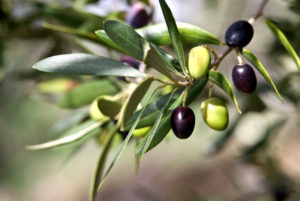Written by Jessica Patella, ND. The study concluded that 2% olive leaf extract cream was an effective option for herpes simplex virus (HSV).
 Herpes simplex virus (HSV) is one of the most common skin diseases, with an estimated 3.7 billion people worldwide having been infected 1,2. There are two types of HSV infections: HSV-type 1 typically causes oral infections, while HSV-type 2 causes genital infections. Symptoms of HSV-1 infection include a painful vesicle on the lips that then ulcerate, typically lasting for 12 days 1,3. Antiviral drugs are typically used for infections, but drug resistance and side effects have led to research of olive leaf extract 1,4. Recent research has found olive leaf extract superior in healing outbreaks of HSV-1 compared to antiviral (acyclovir) cream 1.
Herpes simplex virus (HSV) is one of the most common skin diseases, with an estimated 3.7 billion people worldwide having been infected 1,2. There are two types of HSV infections: HSV-type 1 typically causes oral infections, while HSV-type 2 causes genital infections. Symptoms of HSV-1 infection include a painful vesicle on the lips that then ulcerate, typically lasting for 12 days 1,3. Antiviral drugs are typically used for infections, but drug resistance and side effects have led to research of olive leaf extract 1,4. Recent research has found olive leaf extract superior in healing outbreaks of HSV-1 compared to antiviral (acyclovir) cream 1.
Recently, olive leaves have gain interest, as they are typically extracted in Mediterranean areas and used in traditional remedies 1. In Iran, olive leaves have been traditionally used for wounds and skin diseases 1,5. Research has shown olive leaf extract to have antiviral 6, antioxidant 7, antifungal 8, anti-inflammatory 9, and antibacterial activities 10. Research has also confirmed olive leaf extract to have strong antiviral impact on hepatitis virus, herpes mononucleosis, rotavirus, respiratory syncytial virus, and parainfluenza type 3 virus 1,6.
The recent research study examined the difference between 2% olive leaf extract cream and 5% acyclovir (antiviral drug) cream in the healing of HSV-1. The participants were randomly assigned to either treatment (n=33 in each group), after being diagnosed with HSV-1 by a dermatologist in a University dermatology clinic 1. The participants were instructed to apply the treatment topically 5 times a day for 6 days (daily dose 1 gram acyclovir, 0.4 gram olive leaf extract cream). Participants were contacted daily during the 6-day treatment period to confirm treatment compliance 1. After randomization, it was noted that the ulcer size was larger (P=0.035) and the irritation (P=0.030) was more intense in the olive leaf extract group prior to treatment 1.
The results were as follows:
- By the third day of treatment, participants in the olive leaf extract group had significantly less bleeding (6.5% vs 25.8%, P=0.038), itching (12.9% vs 48.4 %, P=0.002) and severe pain (3.2% vs 35.5%, P=0.001) compared to the acyclovir group.
- By the sixth day of treatment, participants in the olive leaf extract group had significantly less irritation (3.2% vs 25.8%, P=0.030), itching (3.2% vs 32.3%, P=0.003) and color change (12.9% vs 61.3%, P=0.001) compared to the acyclovir group.
- Healing time in the olive leaf extract group was significantly shorter than in the acyclovir group (2.78 +/-2.15 vs 5.03 +/-135, P=0.001). The olive leaf extract group also had significantly shorter number of days until resolution of clinical symptoms (Day-3 90.3% vs 51.6%, P<0.001 and Day-6 93.5% vs 58.1%, P<0.001) compared to acyclovir.
In conclusion, 2% olive leaf extract cream was found to be an effective option for HSV-1. Research suggest its use in patients that do not tolerate standard treatment well. This was the first study to investigate olive leaf extract in the treatment of HSV-1. Future research should include more patients and consider serological test to confirm HSV-1 diagnosis.
Source: Toulabi, Tahereh, Bahram Delfan, Marzieh Rashidipour, Sajad Yarahmadi, Farzaneh Ravanshad, Amir Javanbakht, and Mohammad Almasian. “The efficacy of olive leaf extract on healing herpes simplex virus labialis: a randomized double-blind study.” Explore 18, no. 3 (2022): 287-292.
© 2021 Elsevier Inc. All rights reserved.
Click here to read the full text study.
Posted July 5, 2022.
References:
- Toulabi T, Delfan B, Rashidipour M, et al. The efficacy of olive leaf extract on healing herpes simplex virus labialis: A randomized double-blind study. Explore (NY). May-Jun 2022;18(3):287-292. doi:10.1016/j.explore.2021.01.003
- Balasubramaniam R, Kuperstein AS, Stoopler ET. Update on oral herpes virus infections. Dent Clin North Am. Apr 2014;58(2):265-80. doi:10.1016/j.cden.2013.12.001
- Lotufo MA, Tempestini Horliana ACR, Santana T, et al. “Efficacy of photodynamic therapy on the treatment of herpes labialis: A systematic review”. Photodiagnosis Photodyn Ther. Mar 2020;29:101536. doi:10.1016/j.pdpdt.2019.08.018
- Jiang YC, Feng H, Lin YC, Guo XR. New strategies against drug resistance to herpes simplex virus. Int J Oral Sci. Mar 30 2016;8(1):1-6. doi:10.1038/ijos.2016.3
- Motamedifar M, Nekoueian A, Moatari A. The effect of hydroalcoholic extract of olive leaves against herpes simplex virus type 1. 2007;
- Micol V, Caturla N, Pérez-Fons L, Más V, Pérez L, Estepa A. The olive leaf extract exhibits antiviral activity against viral haemorrhagic septicaemia rhabdovirus (VHSV). Antiviral Res. Jun 2005;66(2-3):129-36. doi:10.1016/j.antiviral.2005.02.005
- Essafi H, Trabelsi N, Benincasa C, Tamaalli A, Perri E, Zarrouk M. Phytochemical profile, antioxidant and antiproliferative activities of olive leaf extracts from autochthonous Tunisian cultivars. Acta Alimentaria. 2019;48(3):384-390.
- Korukluoglu M, Sahan Y, Yigit A. Antifungal properties of olive leaf extracts and their phenolic compounds. Journal of food safety. 2008;28(1):76-87.
- Haloui E, Marzouk B, Marzouk Z, Bouraoui A, Fenina N. Hydroxytyrosol and oleuropein from olive leaves: Potent anti-inflammatory and analgesic activities. Journal of Food, Agriculture & Environment. 2011;9(3-4):128-133.
- Ghomari O, Sounni F, Massaoudi Y, et al. Phenolic profile (HPLC-UV) of olive leaves according to extraction procedure and assessment of antibacterial activity. Biotechnol Rep (Amst). Sep 2019;23:e00347. doi:10.1016/j.btre.2019.e00347

